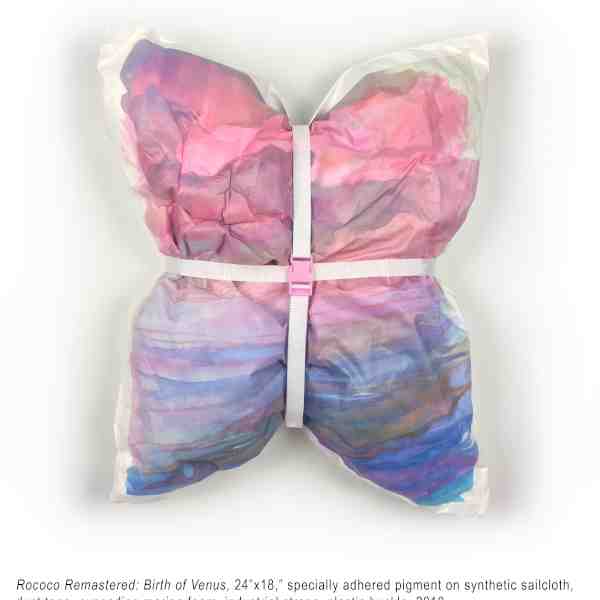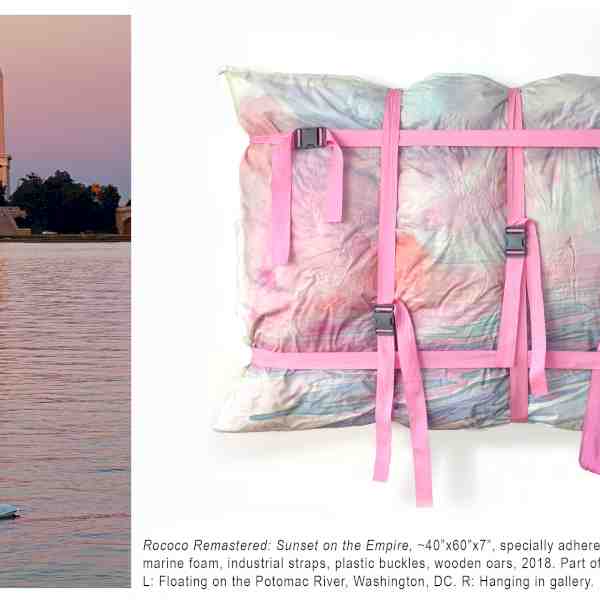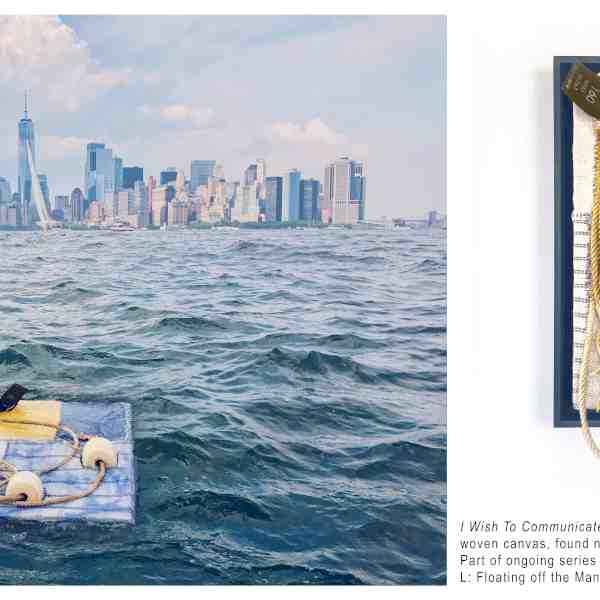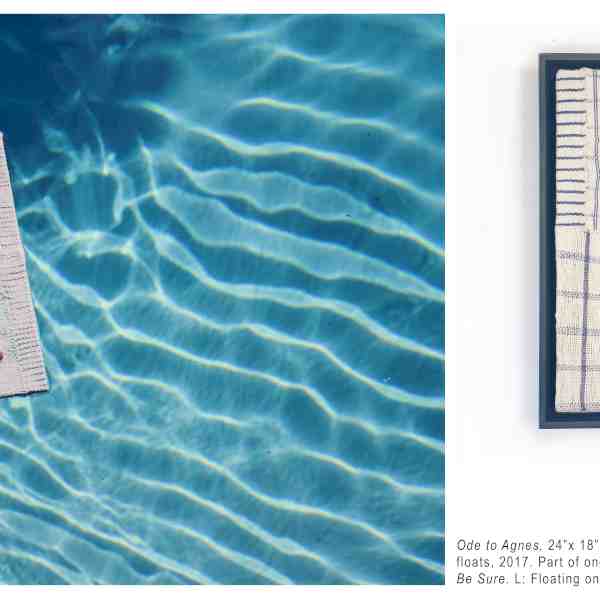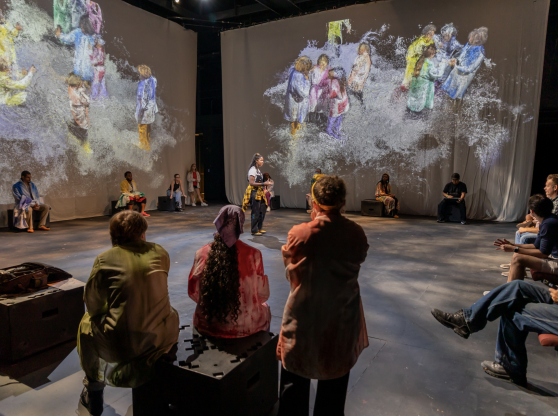If you happened to see a woman floating down the Potomac River on a pastel sailcloth in the middle of August, what you were actually seeing was Noel Kassewitz performing on a piece from her climate change series, Rococo Remastered. Concerned specifically with rising sea levels, Kassewitz (BFA Art ‘13) delves into the impending environmental changes by asking the question: “How does an artist prepare for climate change?” Through humor and clever wit, Kassewitz makes a statement with her art in hopes for global awareness and change.
Even from her earliest of pieces, Kassewitz’s art serves as a commentary for specific topics she is particularly passionate about. In preparation for her two upcoming solo shows in Washington, D.C., we caught up with the game-changing artist about her work and artistic plans for the future.
Emma: At what point did you decide to focus your art and work on climate change, and why is it important to you?
Noel: In particular with climate change, since about 2015, or somewhere in that range, is when I started to focus my art more specifically on it.
My upbringing and connection as an artist is fueled by nature. It wasn’t until later, around 2015, when I decided to address rising sea levels and climate change, without it feeling too contrived. While I’ve noticed the topic being more widely embraced, there has always been a weird stigma surrounding environmental art. My biggest concern when I started this environmentally focused artistic endeavor was finding a way to tackle this topic without being rejected. When people think about this type of art they typically picture a polar bear on a melting ice cap or something very literal, so my goal was to break out of that stereotype and do something more abstract and unique.
Being an environmentally conscious artist has made me smarter because I have to become more nuanced in the way I approach the subject, as well as extremely creative so I can catch people’s attention and heighten their awareness.
E: How does your sense of humor tie into your work and artistic movements?
N: I’m a sensitive soul, so if I don’t laugh about it, I weep about it. The phrase “climate grief” is the intense feeling that you know something is coming, but its not conceivable. It is something I carry with me on the daily. It creates a weird and complicated feeling in your brain. Do I wake up, face the issue, and feel terrible all day or do I do something about it? I choose to do something about it.
A lot of people tend to grow apathetic to climate change because it’s a lot to wrap your mind around. It's a real tough subject for an individual to face and comprehend. Society has been hitting the nail on the head for so long in regards to climate change and global warming that people tend to turn a blind eye instead of being proactive about it. I have found that a way of getting around this is through humor. By showing people art through humor, I hope for more acceptance by approaching the topic in a way they can relate and respond to. Humor reframes the issue in just a gentle enough way where people can start engaging with the topic, instead of ignoring it.
E: What do you want people to know about your work?
N: I hesitate to say directly because everybody's engagement with the work is different. Responses will vary from person to person. Overall, I hope my work opens the eyes and minds of people to the issue at hand. I hope they can recognize the severity of climate change and maybe question what they can do in their lives to to help this problem.
I also hope to reframe the conversation and get them to consider the question: If climate change can affect an artist, than how does it affect me in my industry?
E: How has your experience at the University of Florida influenced your career?
N: There are three things that really stand out to me from my time in the School of Art + Art History. Going to UF meant I had the ability to study other fields of interest simultaneously. I double minored in environmental studies and art history and if had I more time, I would have fully double majored with environmental studies. The art world can be too esoteric and self-referential for me at times, so I loved having the ability to learn from these other areas, recharge myself, and incorporate them in my art.
Secondly, I was able to graduate debt free. As a Florida resident and "gold medallion” student, I could go to this top performing public school almost for free. Forming a career in the arts sector is already volatile and uncertain and for many of my friends who chose to go the route of private conservatory school, which had been an option for me, the weight of their debts has really suppressed their ability to be in the studio creating.
Lastly, in my senior year I was introduced to the director of the Rubell Family Collection, Juan Roselione-Valadez, by professor and former UF School of Art + Art History interim director Richard Heipp during an Art Basel trip in Miami. This paved the way for my internship there in the fall after graduating, which then led my “post-graduate” education when I was hired as part of the team and worked there for a number of years.
Kassewitz plans to continue exploring this topic and exposing more and more people to it.
“I believe paintings are constant reminders on how to shape your life,” she said. “Art work is a way to introduce controversial topics into someone’s everyday life and mindset. I hope to achieve this all the while maintaining a playful, delightful perspective.”



